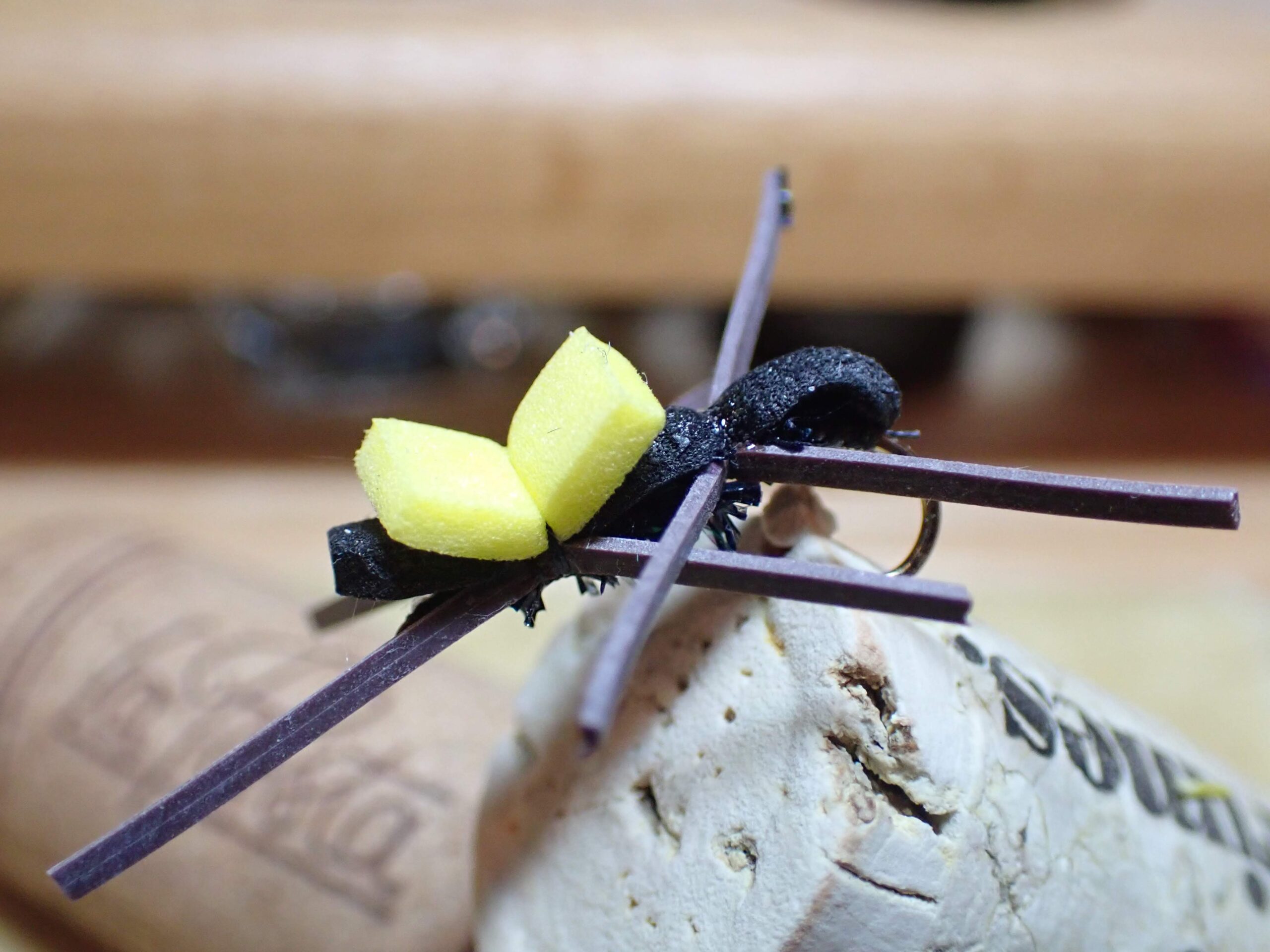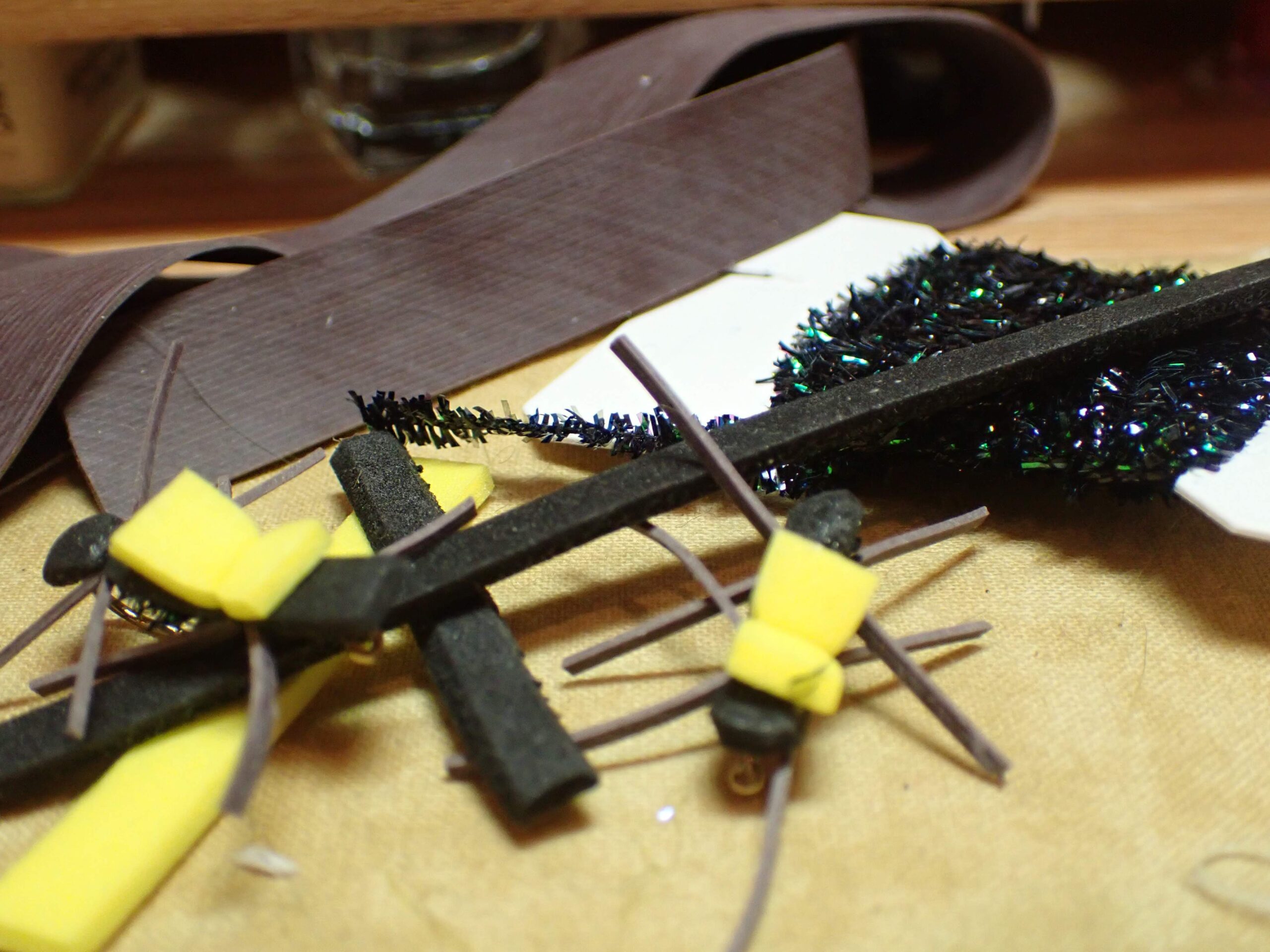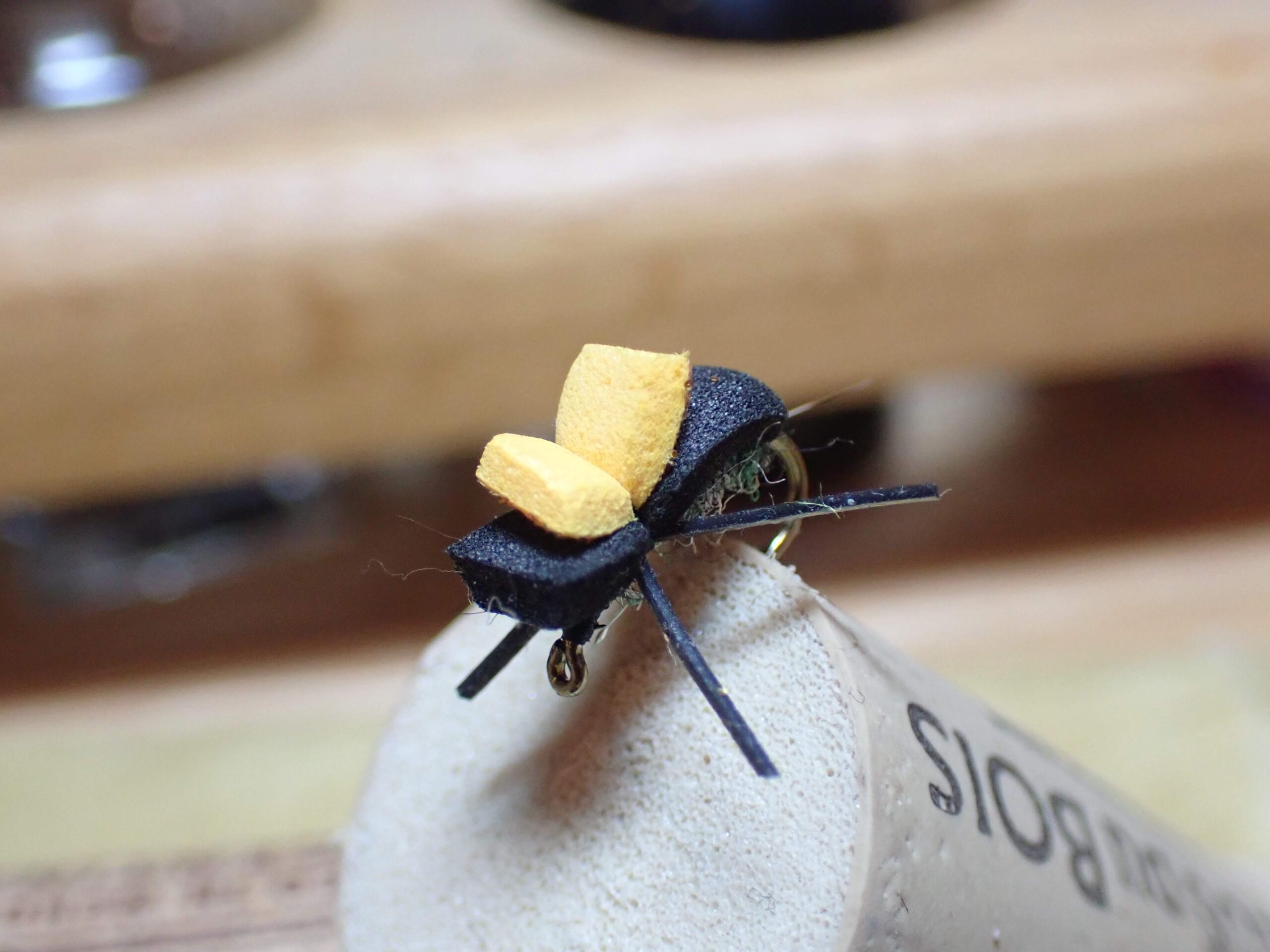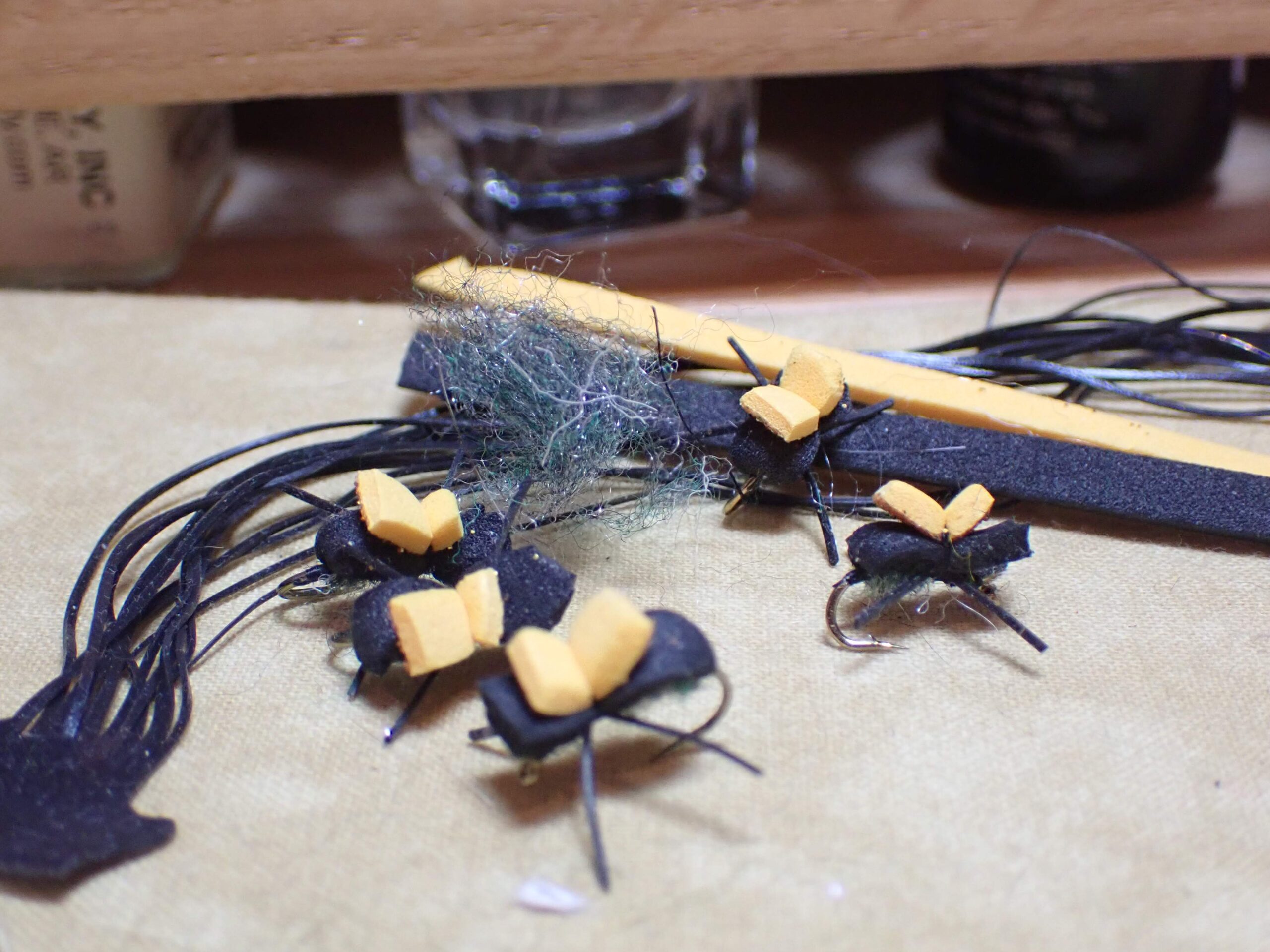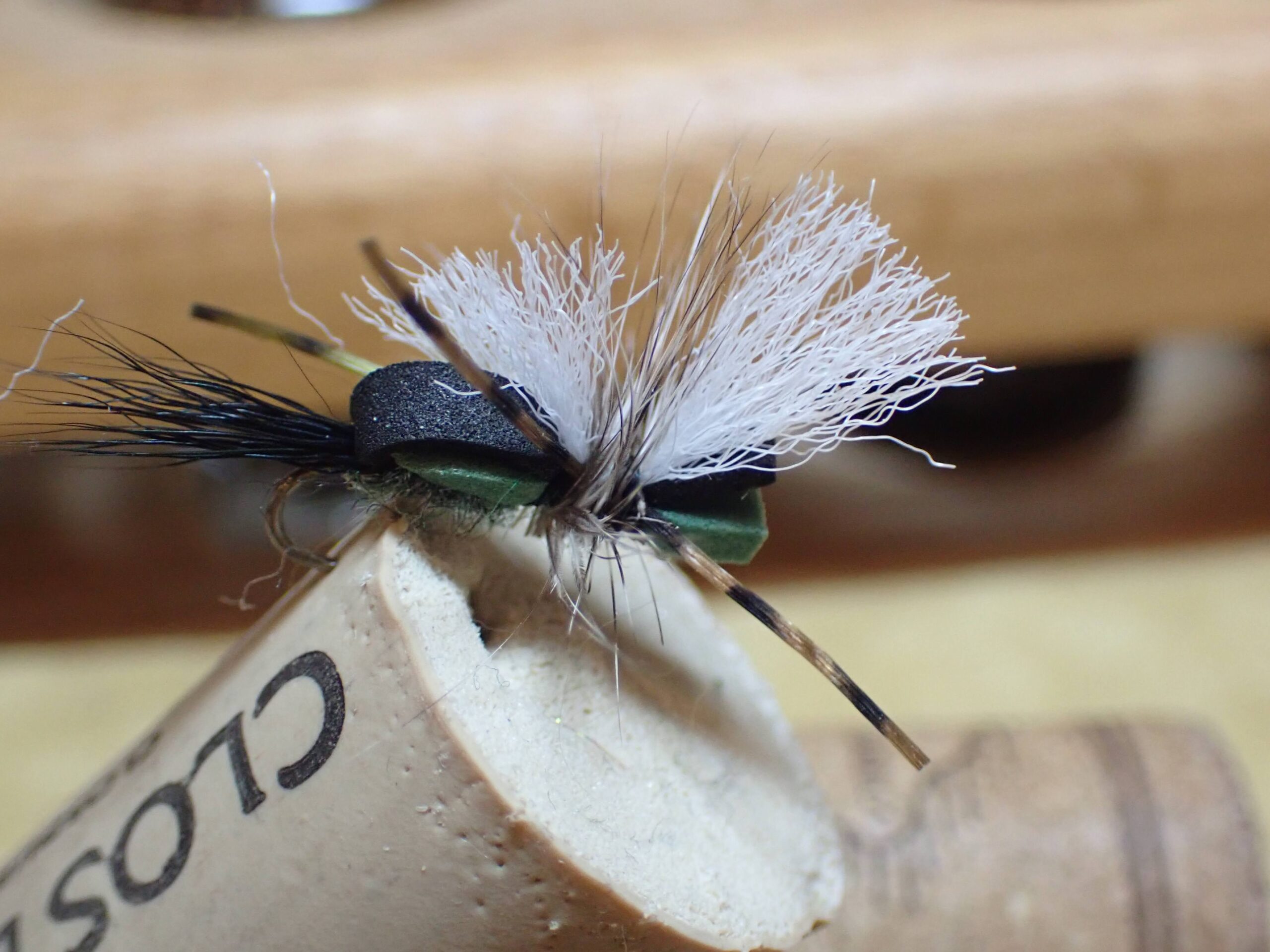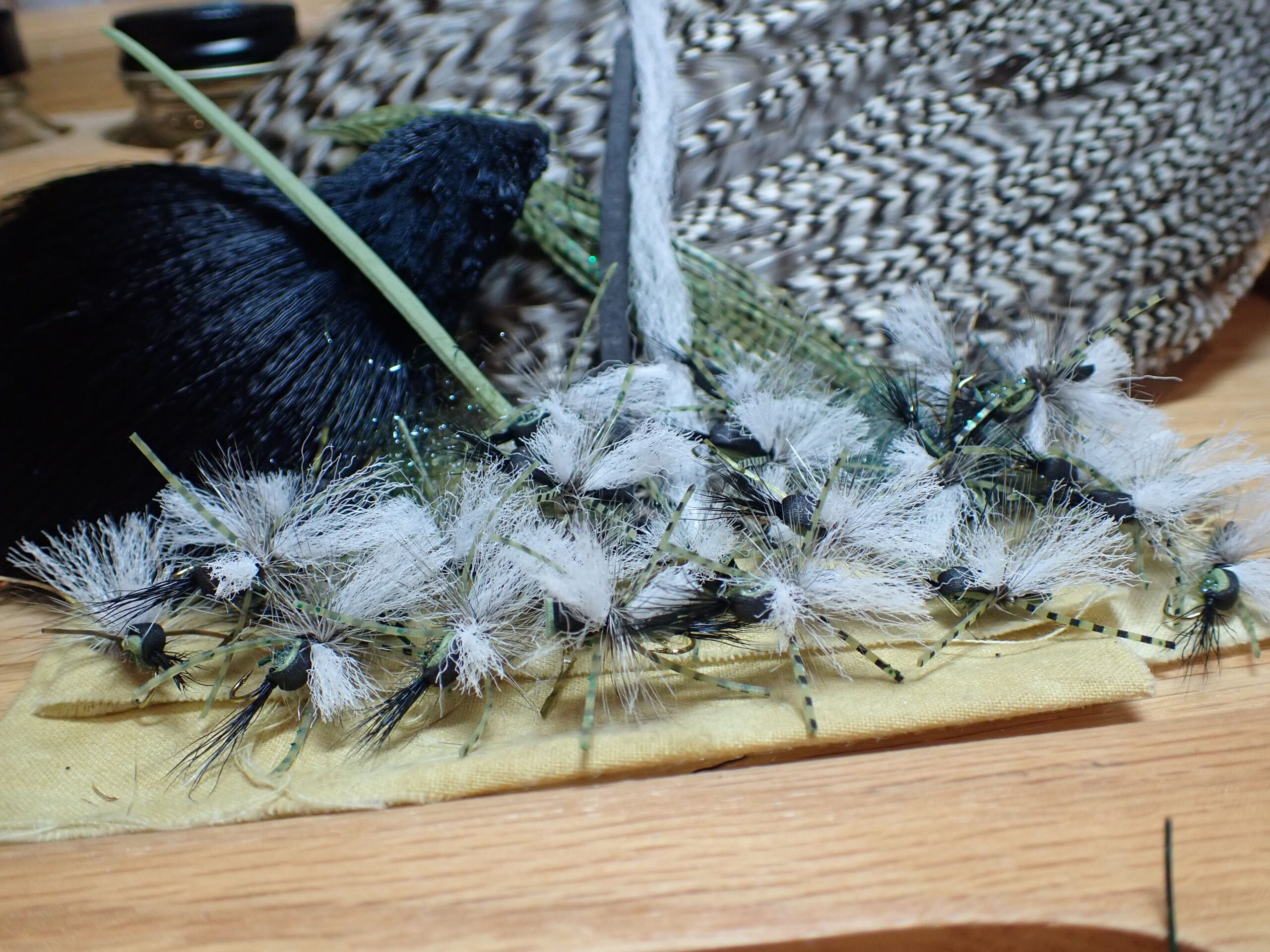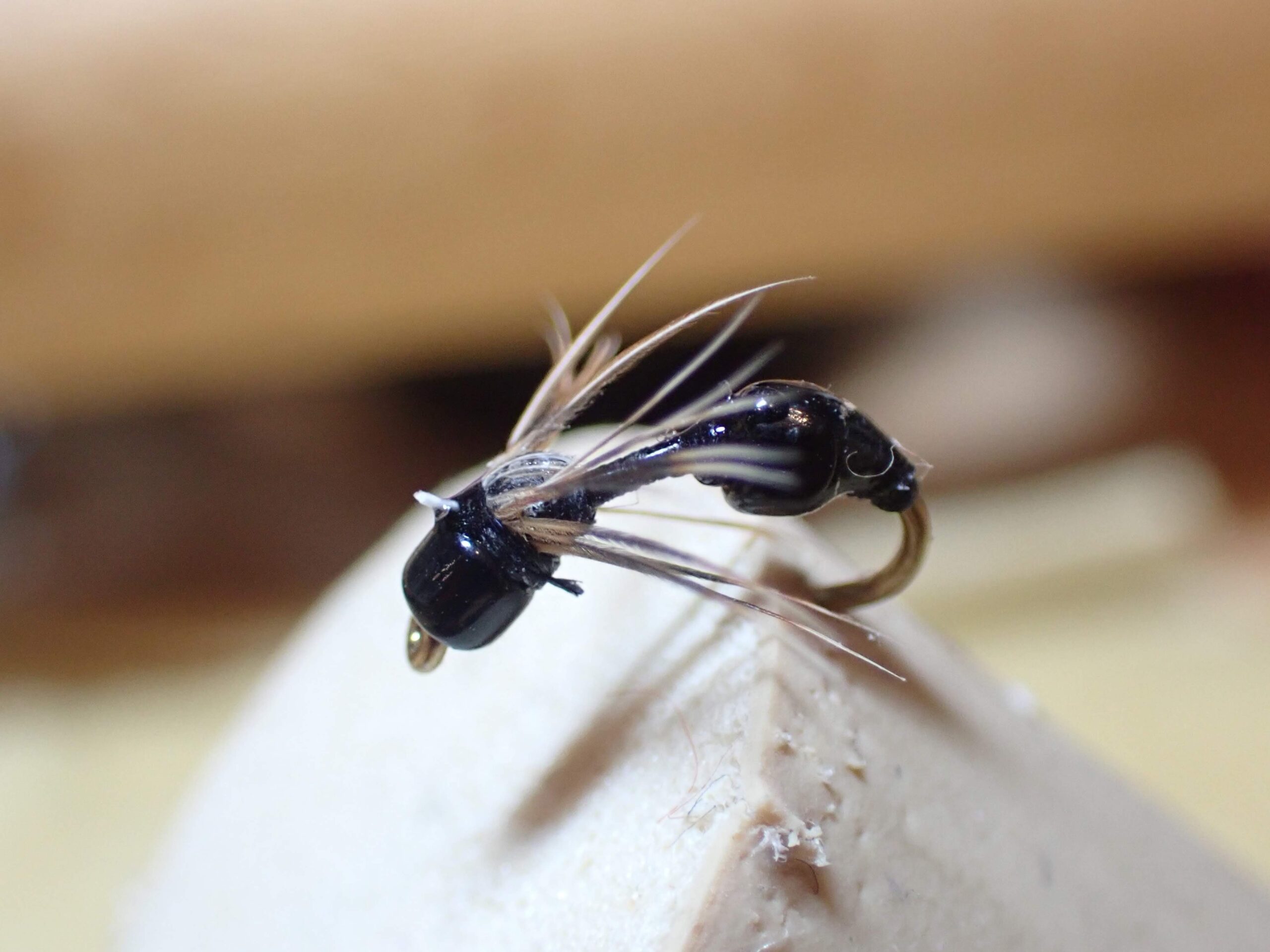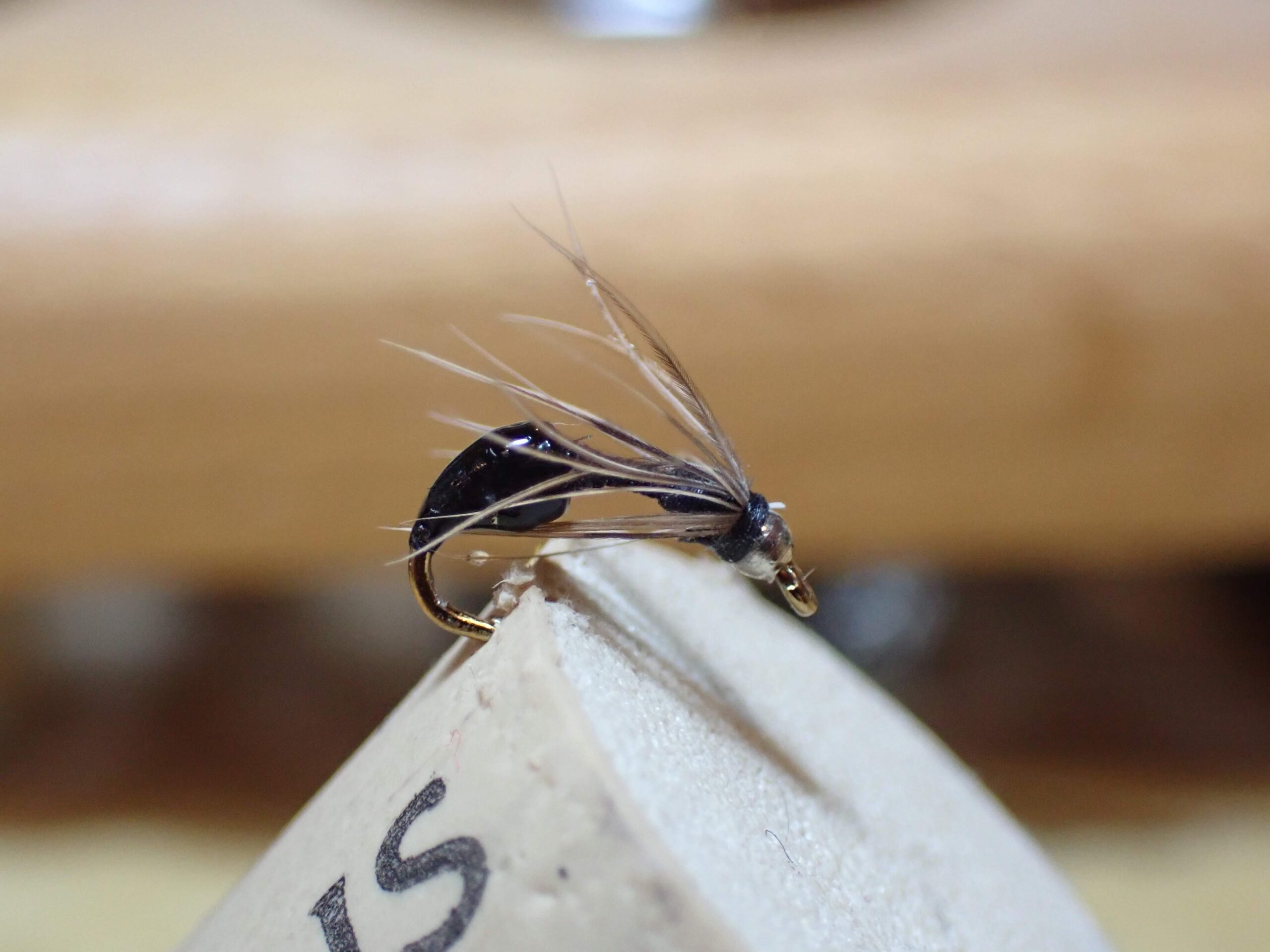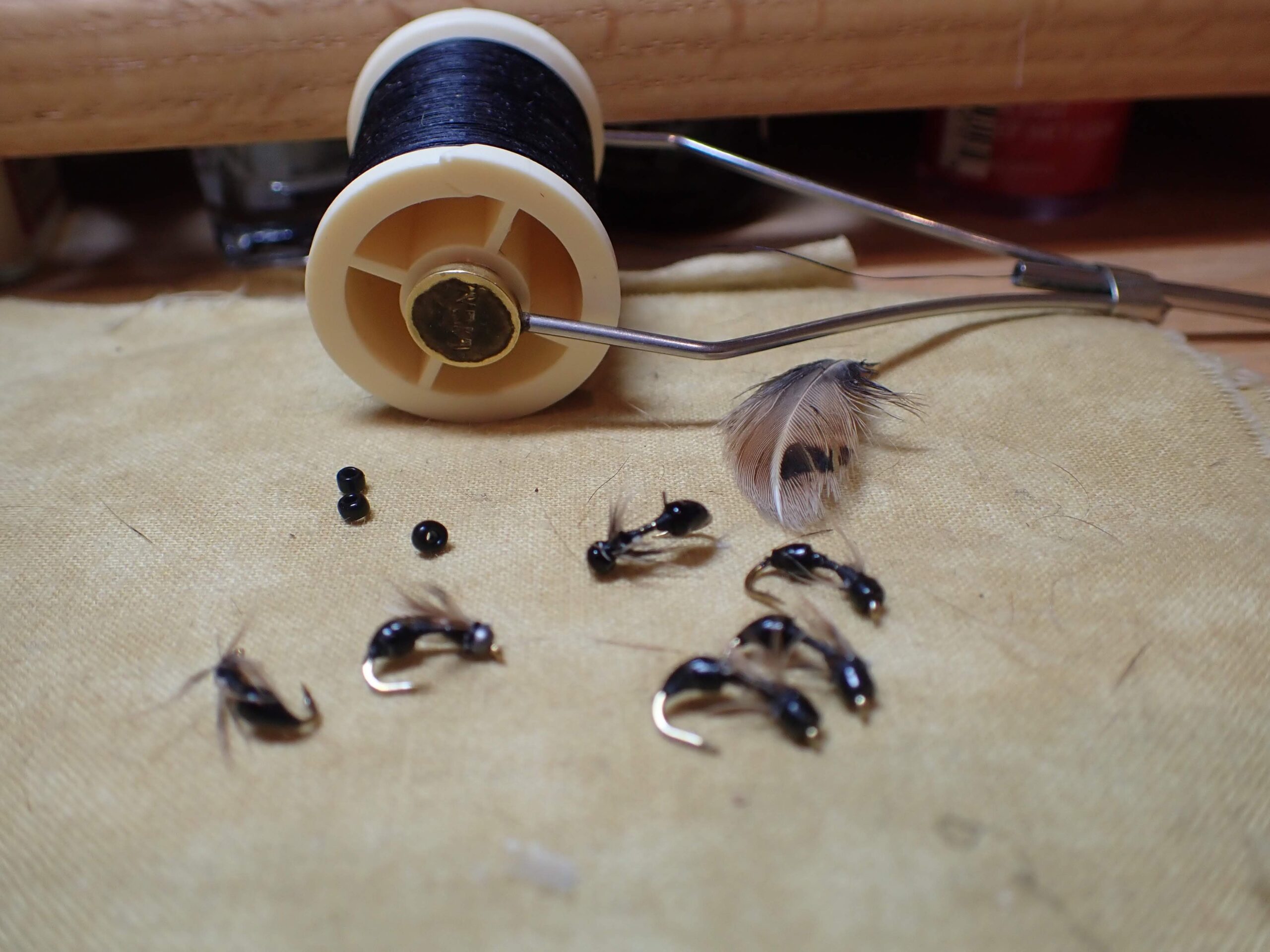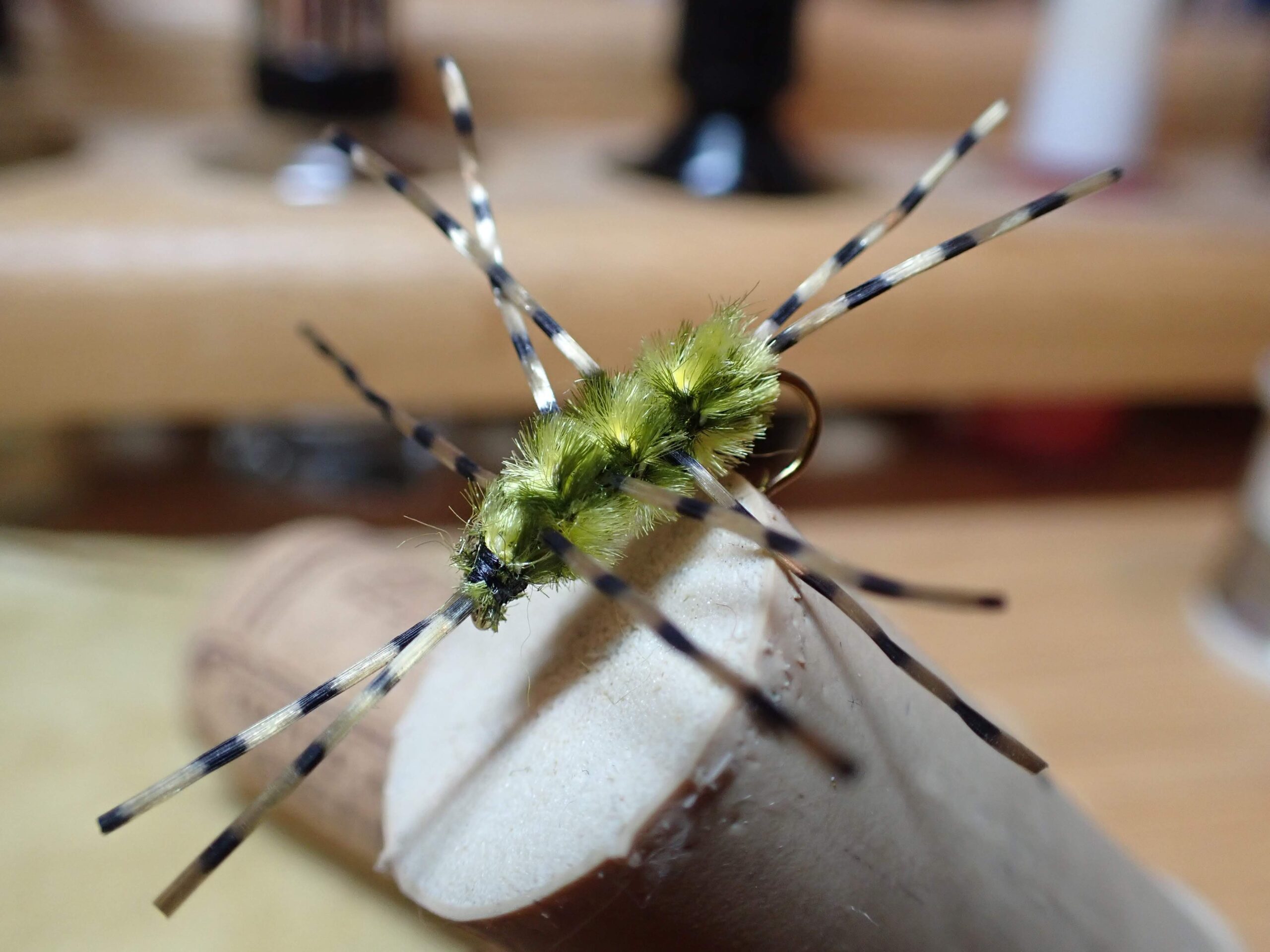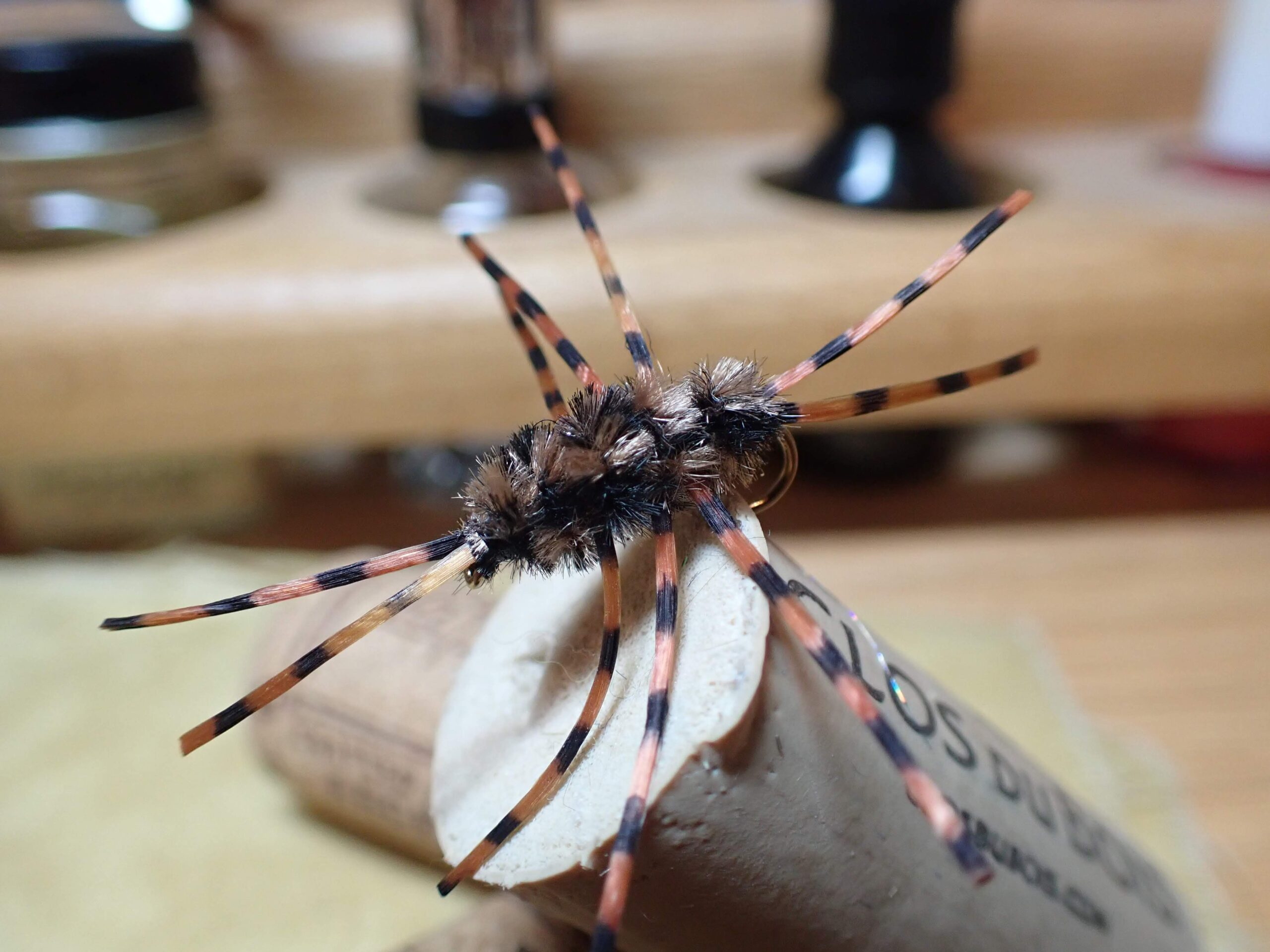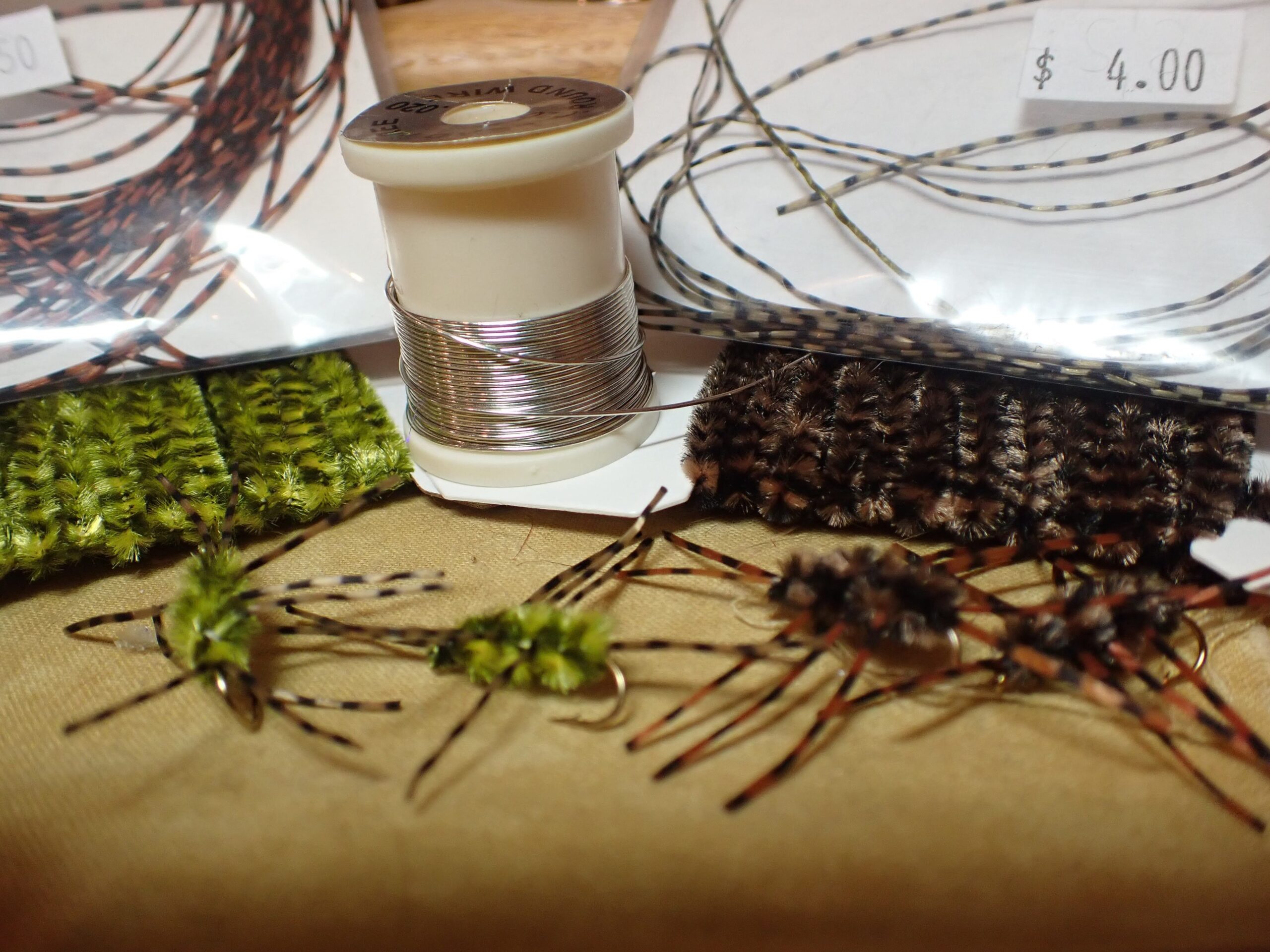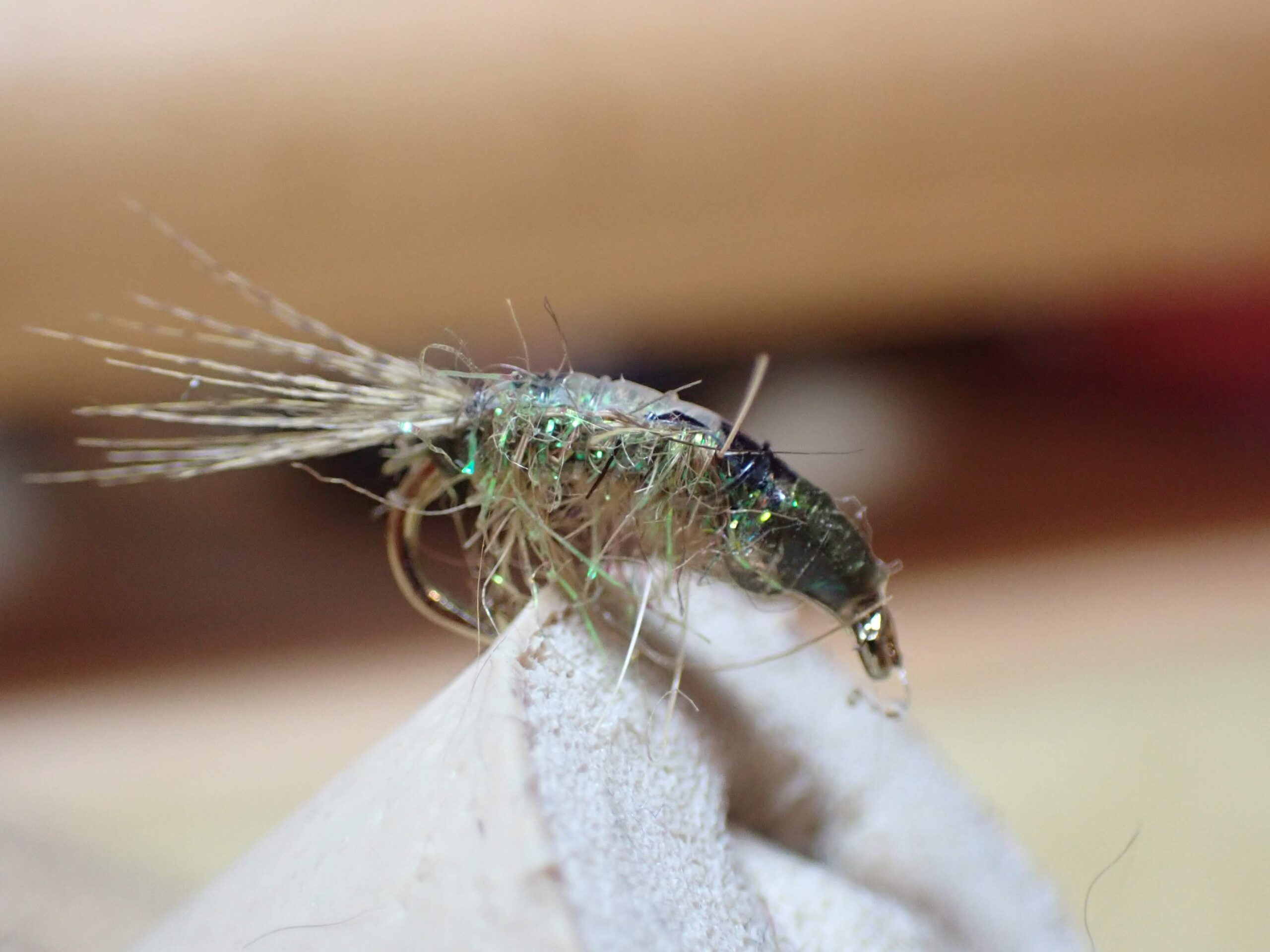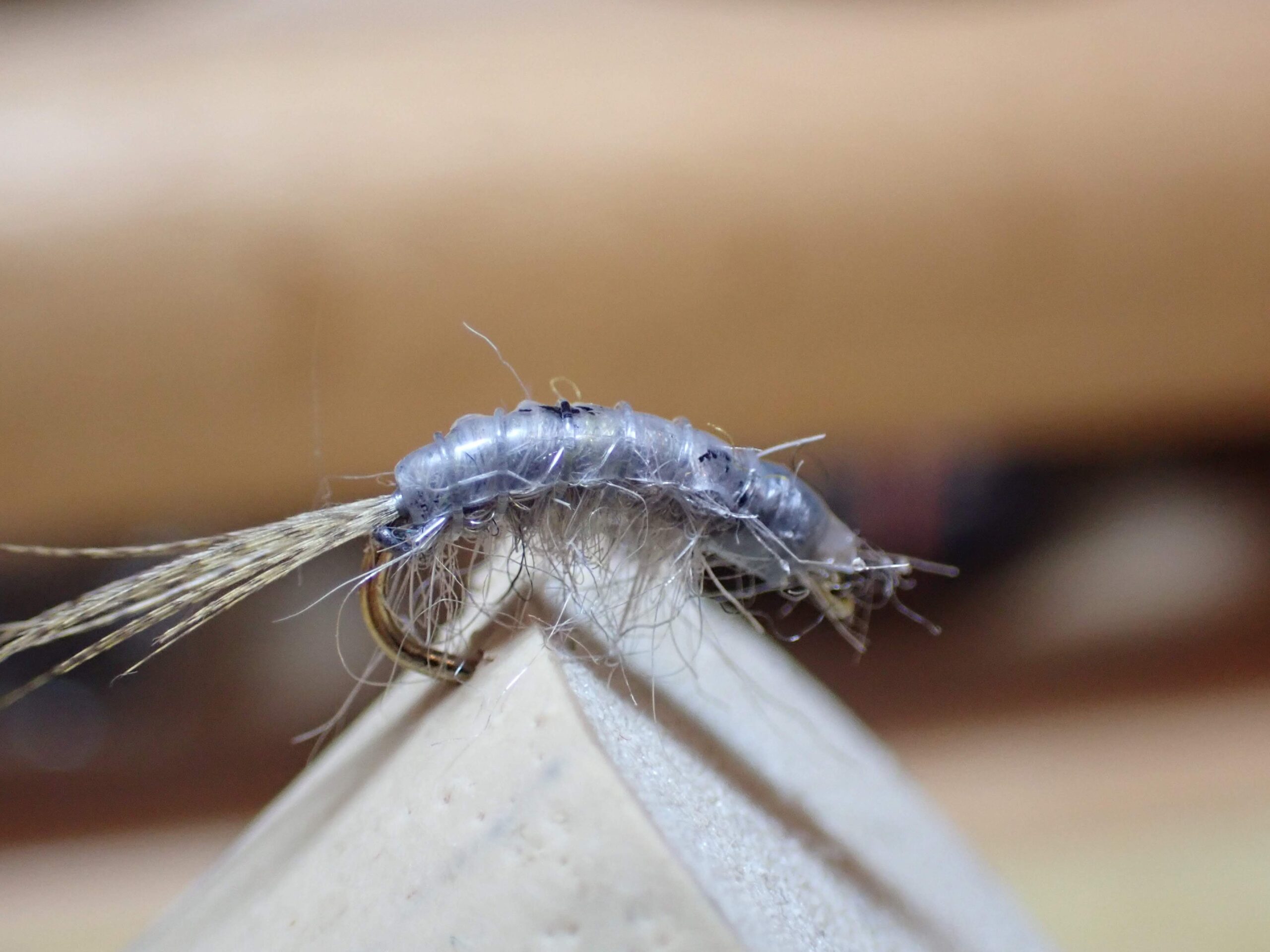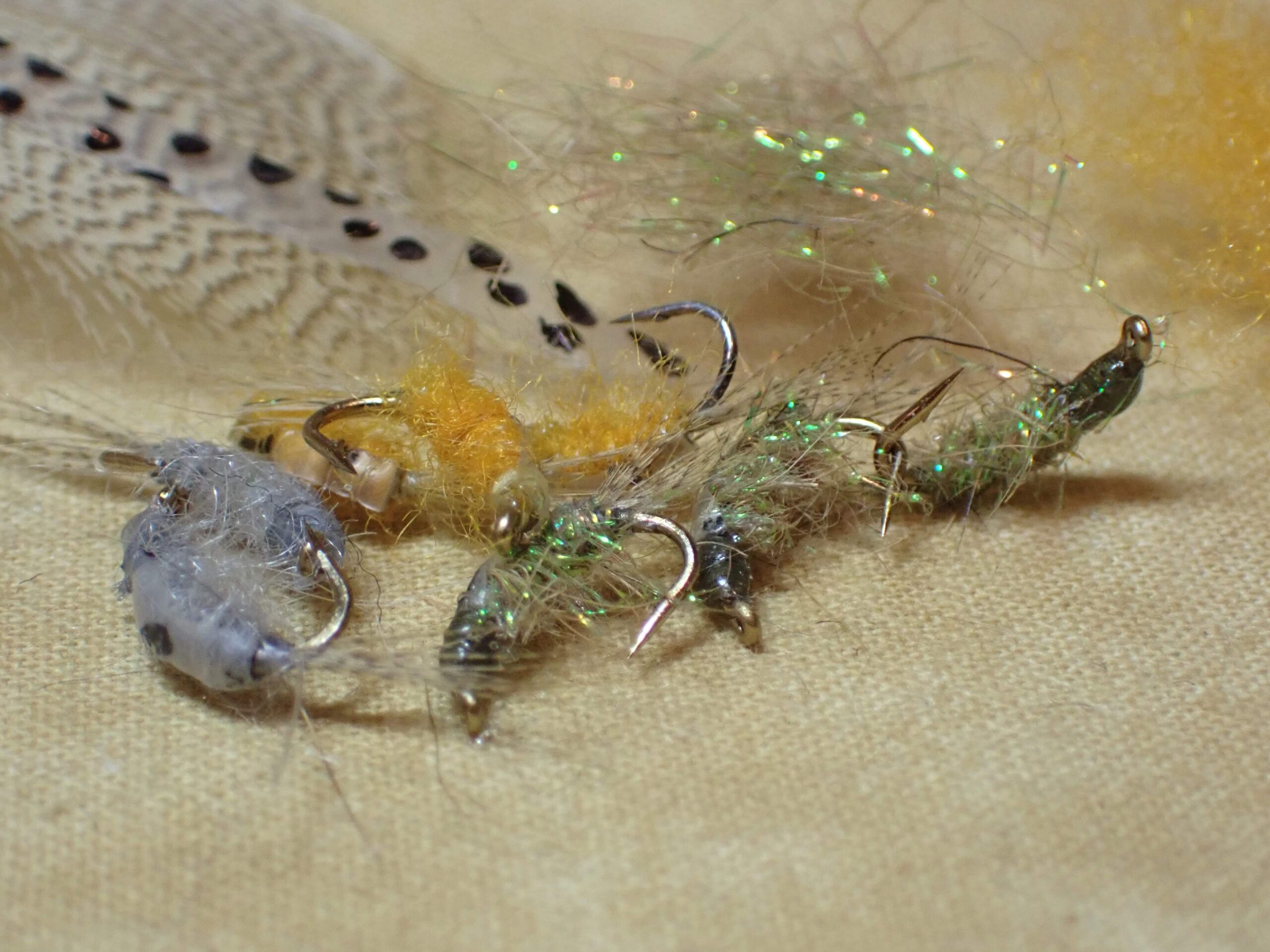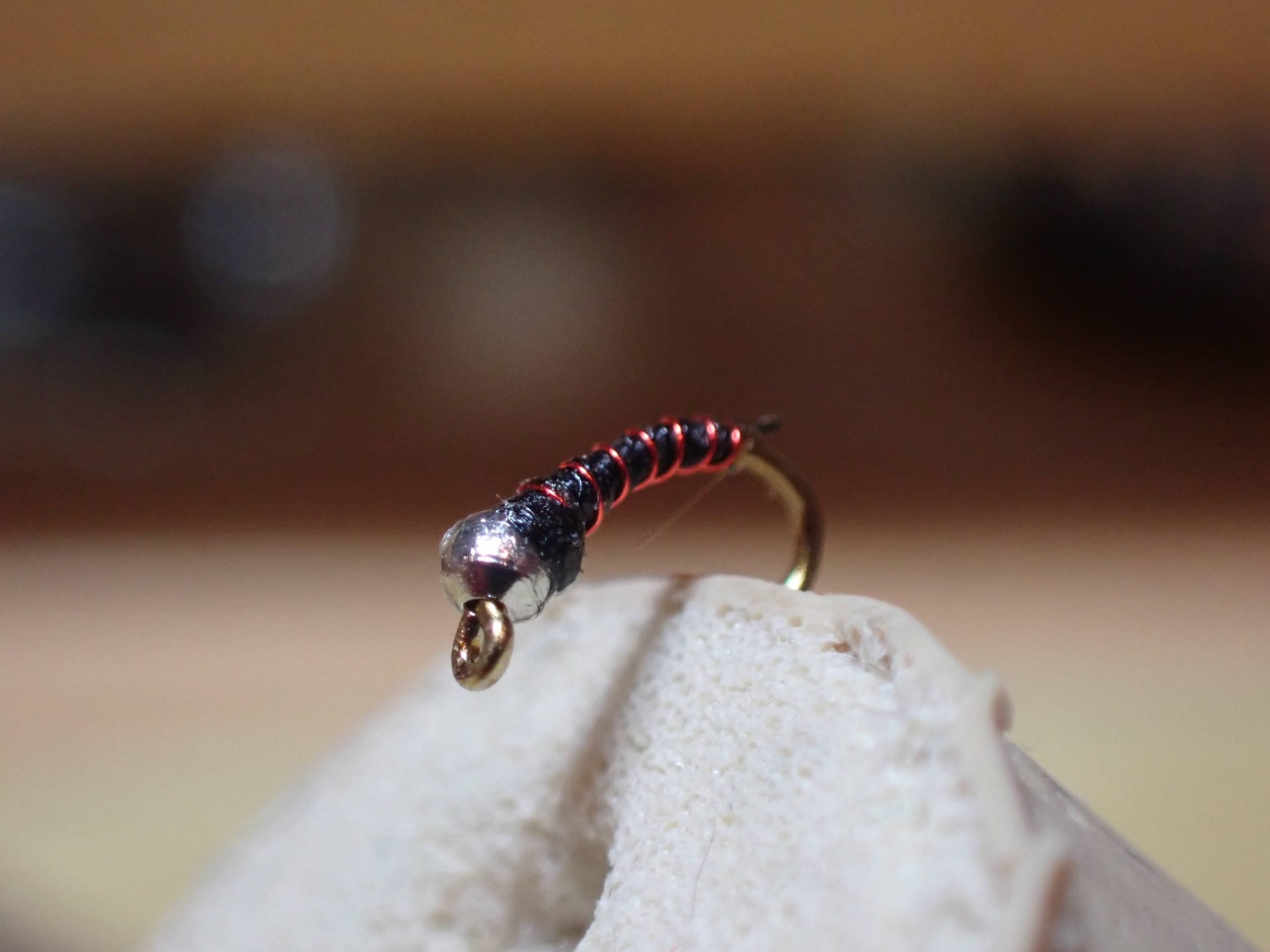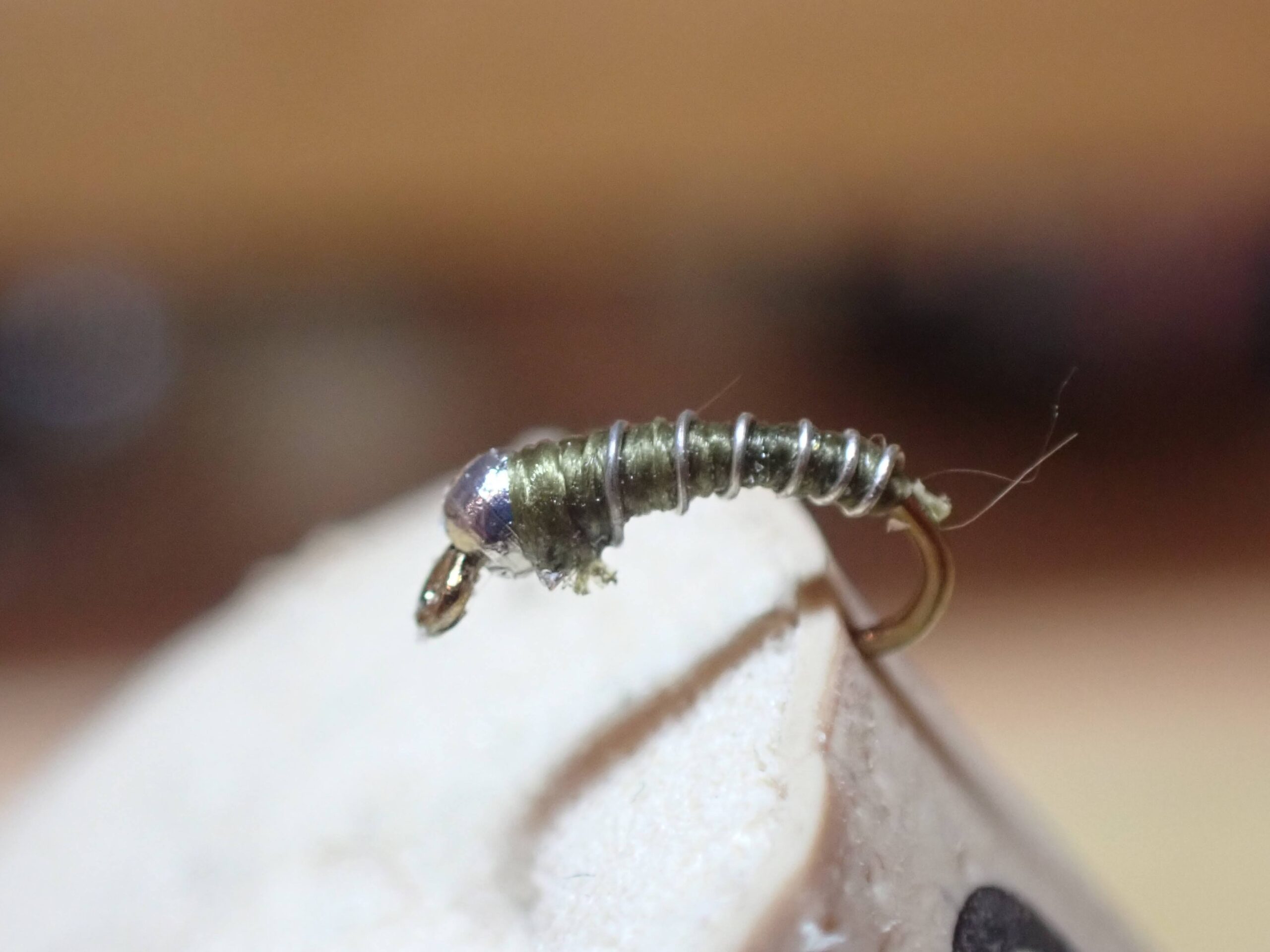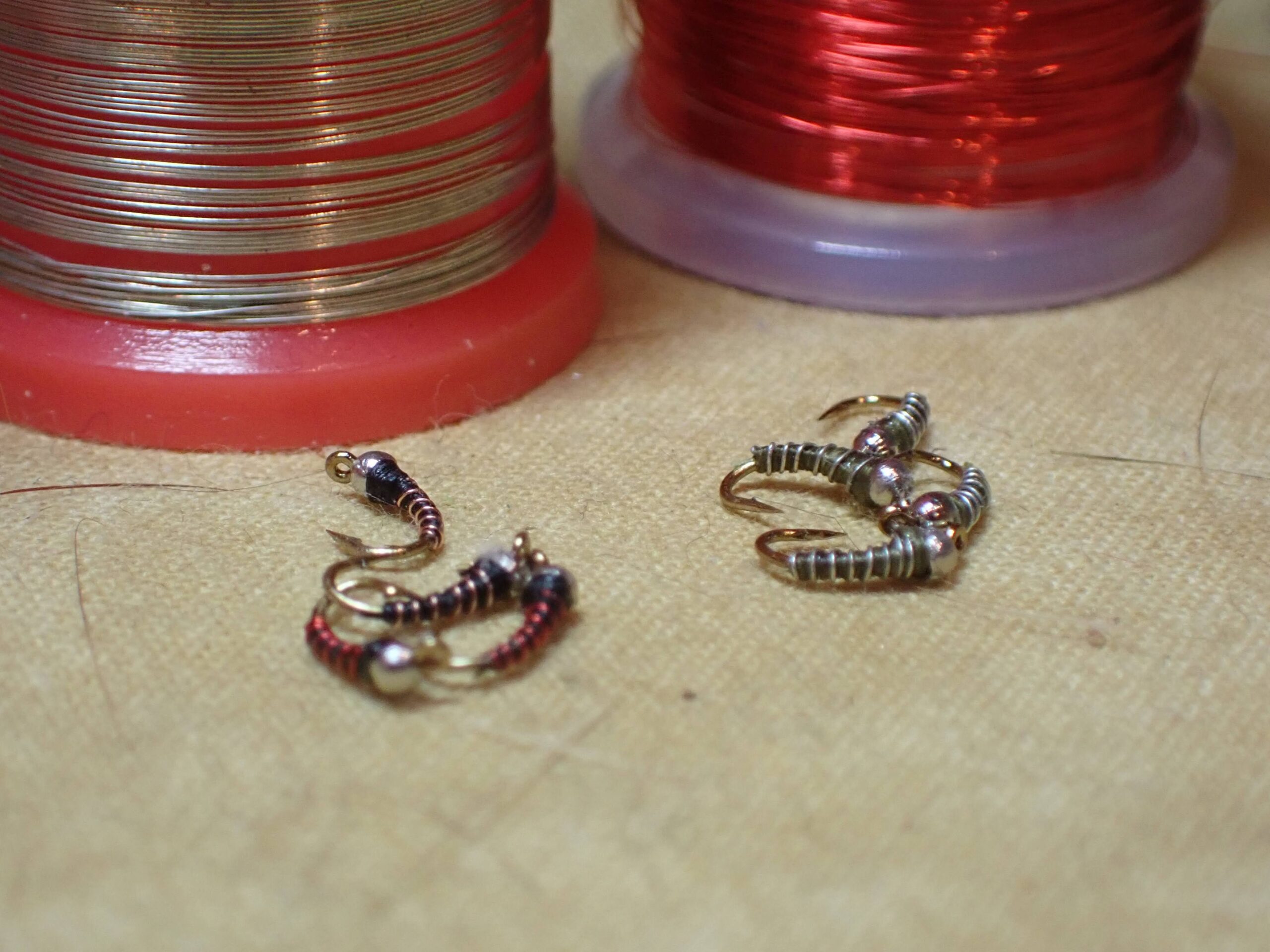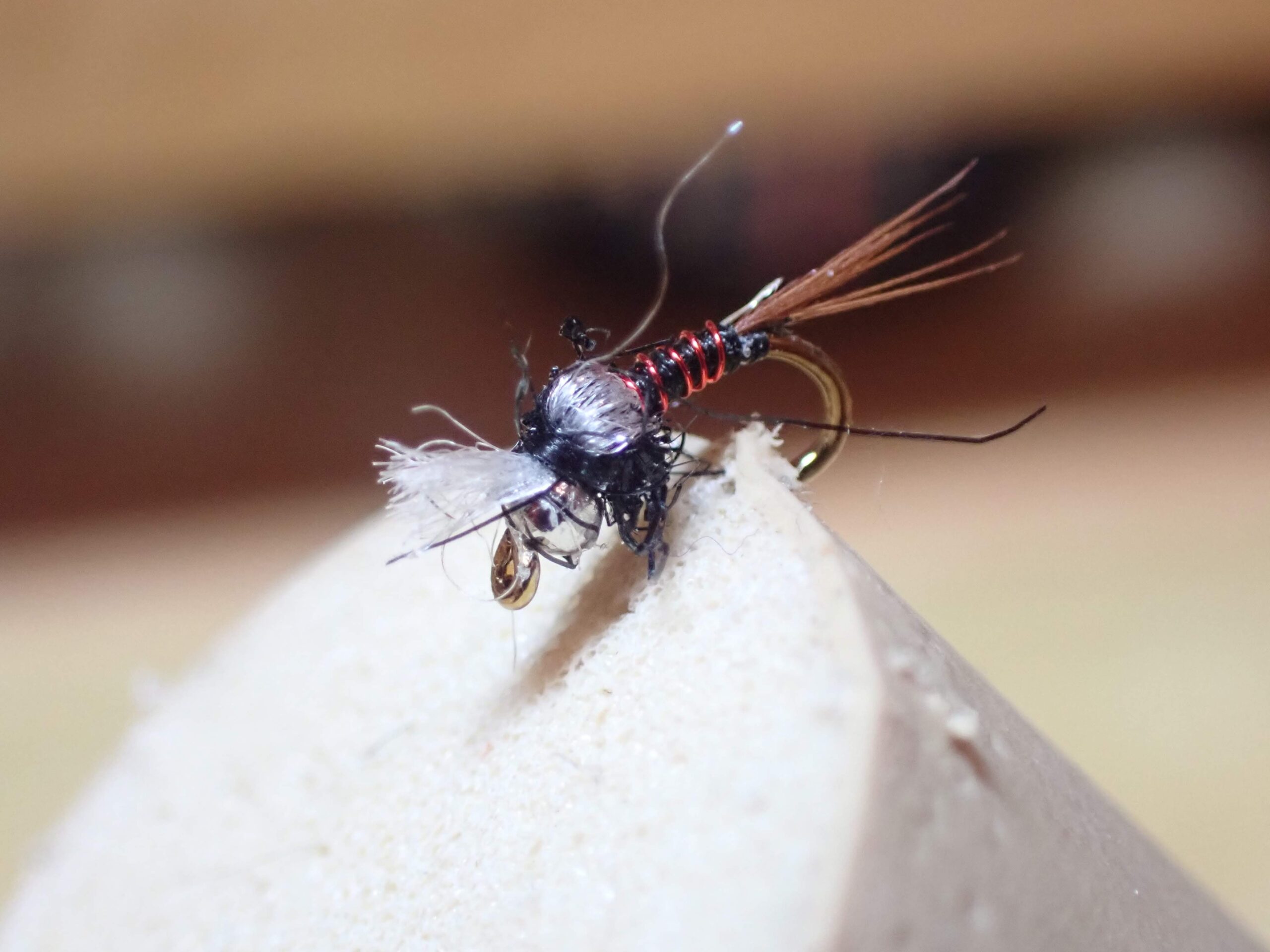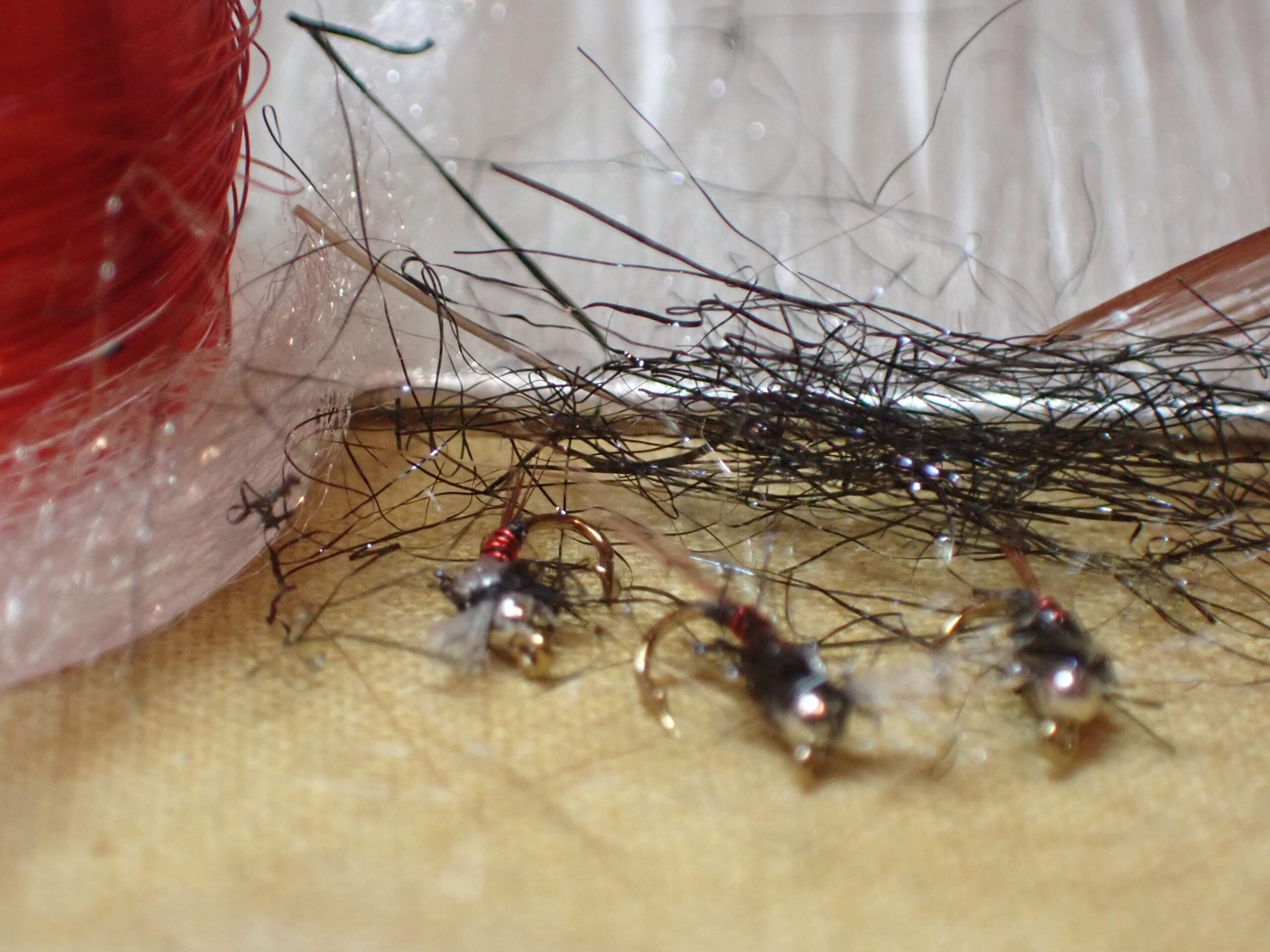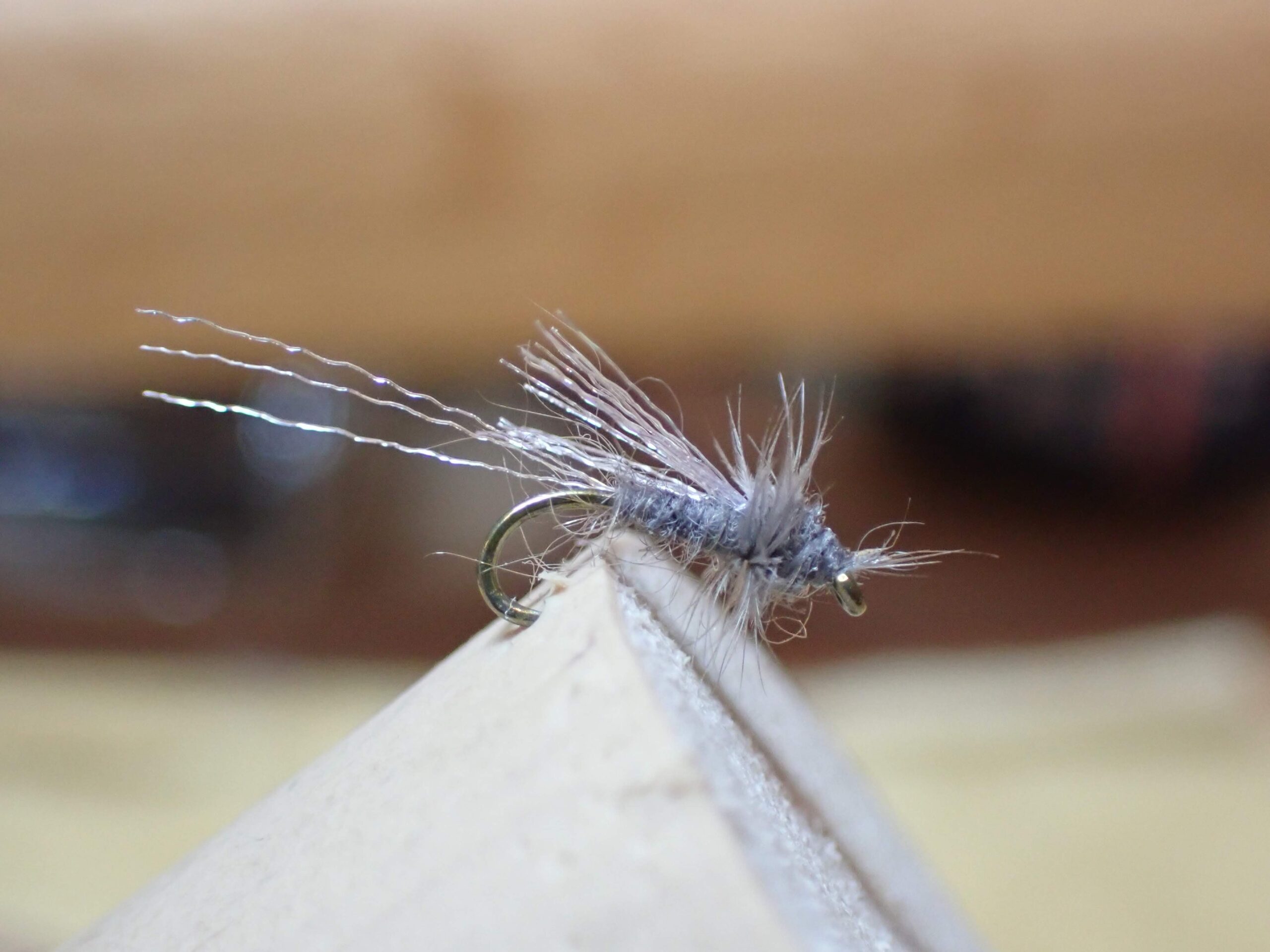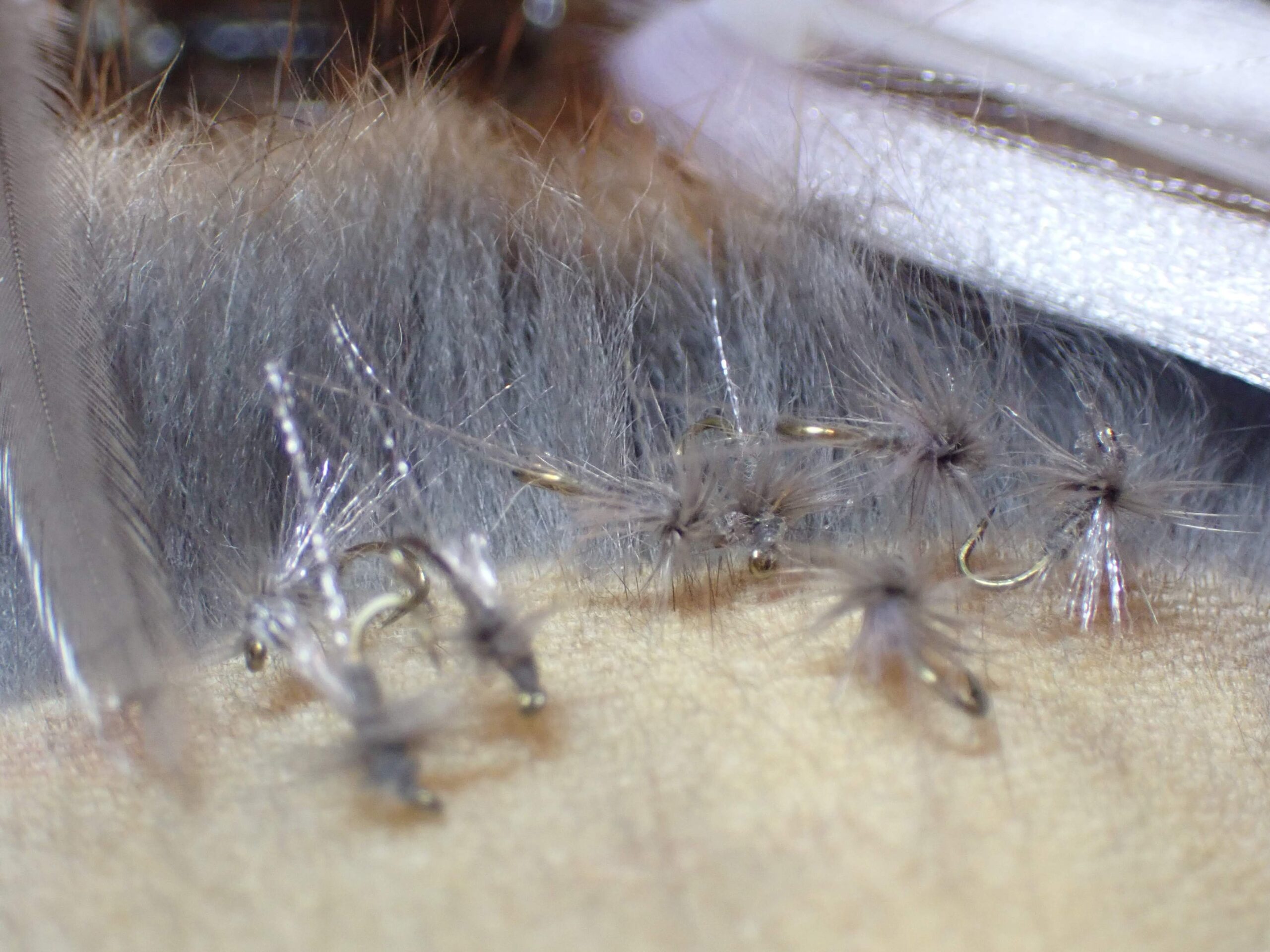Chernobyl Ant 01/23/2024 Photo Album
For an excellent recap of my experience with and usage of the classic Chernobyl ant please review my post of 01/23/2021. It also contains a link to a materials table, and it does an excellent job of explaining the circumstances that induce me to tie a Chernobyl ant to my line. I am unable to build upon that narrative here in any significant way.
My usage of the Chernobyl ant has declined in recent years, as chubby Chernobyls, fat Alberts and pool toy hoppers now command the prime position as a highly visible and very buoyant surface fly in a dry/dropper configuration. For this reason my loss of this fly is negligible, and consequently I determined that I had adequate supplies for another year. In order to remain in practice and to provide some for my young fishing friend, Nate, I tied two. They turned out great, so hopefully Nate will enjoy them as much as I do.

